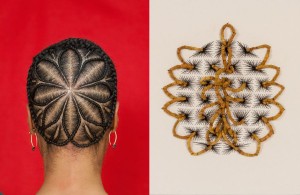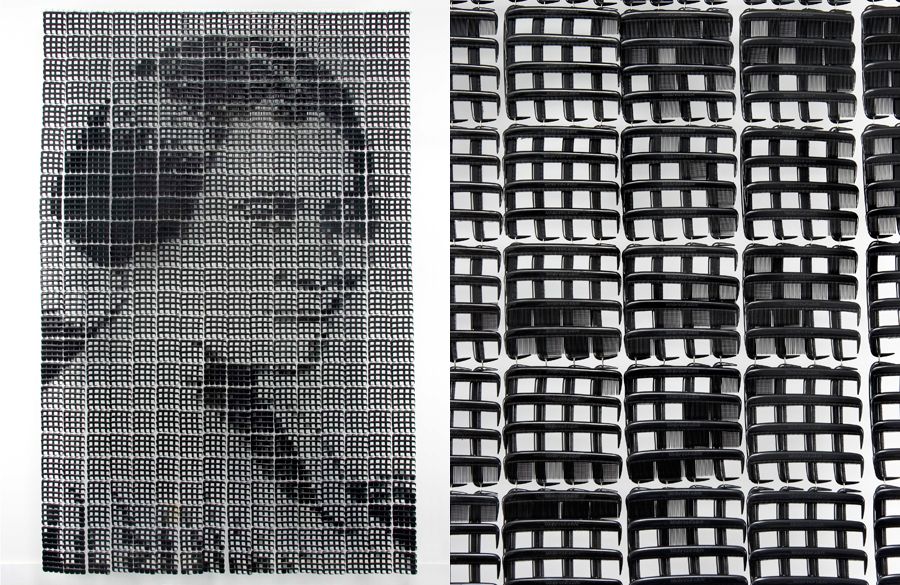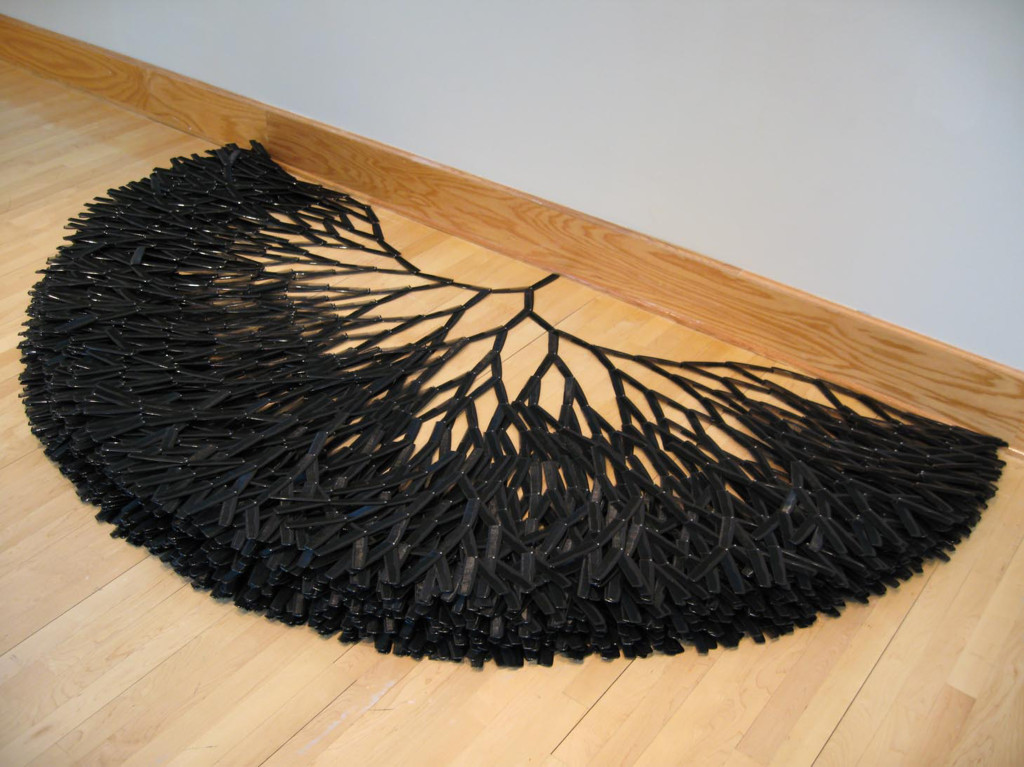
Sonya Clark: Kendall College of Art and Design, Grand Rapids, Michigan, till January 15, 2015.
Hair Craft Project
About:
(from Charleston City Paper, September 4, 2014)
Head full of stories
By Elizabeth Pandolfi
(…)
Craft artist Sonya Clark (1967, Washington DC) has her feet in two worlds. The first is in high academia — she’s a graduate of Amherst College and the prestigious Washington, D.C. Sidwell Friends School, and she holds fine art degrees from the Cranbrook Academy of Art and the Art Institute of Chicago. She’s won major fellowships from countries around the world, including this one, and currently chairs the Department of Craft /Material Studies at Virginia Commonwealth University in Richmond, Va.
 Twist, 2012.
Twist, 2012.
The second, however, is firmly planted in the world of folk or populist art. Clark works with hair, combs, beads, cloth, and copper to explore American history and identity, pulling her inspiration from her family, her West African heritage, and her experience as an African-American woman.
 Hair Craft Project.
Hair Craft Project.
One of her recent projects is the Hair Craft Project — Clark asked African-American hairdressers to create designs on her head, and then re-create them with thread on canvas.
City Paper: How did you begin working with such unusual materials?
Sonya Clark: From an early age I recognized that hairstyling was an important craft that was not only beautiful, but represented identity and character. When I was growing up in D.C., my family lived across the street from the Ambassador of Benin and his family of fourteen. They lived in a large mansion and always welcomed us. My sister and I would go over there to play and return home with elaborate hairstyles.
Years later in my first college degree I studied African Art with Professor Roland Abiodun at Amherst College. I learned about Yoruba culture and reinforced those early notions of hairdressing not as vanity, but as ritual. My formal training as an artist began at the Art institute of Chicago with Ann Wilson, Nick Cave, and Joan Livingstone, and cemented the artful connections between hair, craft, and design. Once I gained a second degree from there I went on for a Masters of Fine Art degree at Cranbrook Academy of Art with Gerhardt Knodel. He and my fellow classmates were instrumental in helping me articulate and hone in on my authentic obsessions: textiles and hair as a lens to better focus on culture, identity, and race.
 Madame C. J. walker.
Madame C. J. walker.
CP: What role do stories play in your art?
SC: [When I was young], my Jamaican grandmother lived with us. She had great skills as a tailor and milliner. I was a quiet child and she would draw me in by encouraging me to sit and stitch with her as we traded stories. She told me stories about her travels around the world visiting with my cousins in Ghana, England, and Jamaica. I would tell her stories about the things I had observed, childhood reminiscences peppered with synesthesia: how the sky smelled, a gender system I had applied to numbers to help me learn addition, or how our laughter felt like something warm and fuzzy or jagged and sharp depending on the intent. These memories were among the many seeds that became the fruits of my artwork.
 Iterations, 2008.
Iterations, 2008.
CP: What’s next for you?
SC: My next projects continue to expand my art practice into the community by engaging hairdressers, African Art collections in major museums, and language. I like to think that the most artful moments are ever present. My challenge is to take the most familiar activity or quotidian object, hold it ear-close, and give voice to its story in a new context.

